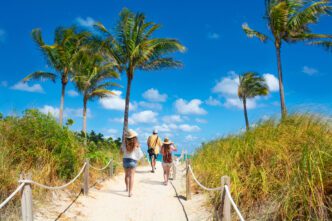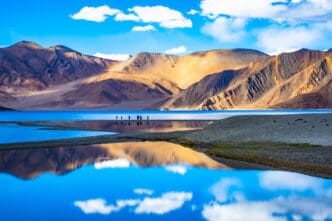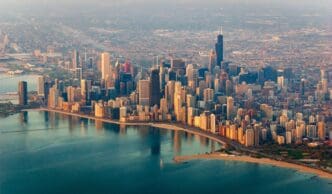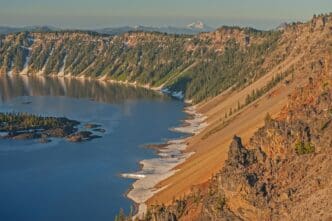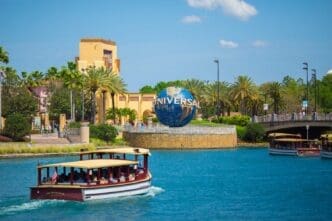For travelers seeking a destination that masterfully blends ancient history, vibrant living culture, and breathtaking natural landscapes, Peru stands as a monumental choice. This South American nation offers a journey through time, from the coastal culinary capital of Lima to the high-altitude heart of the former Inca Empire in Cusco and the legendary citadel of Machu Picchu. The best time to visit for trekking in the Andes is during the dry season from April to October, though the country’s diverse geography makes it a compelling year-round destination. A trip to Peru is more than a vacation; it is an exploration of ancient mysteries, a feast for the senses, and an adventure that caters to history buffs, foodies, and outdoor enthusiasts alike.
Planning Your Peruvian Adventure
A successful trip to Peru hinges on smart planning, particularly concerning the timing of your visit and how you intend to navigate its vast and varied terrain. The country’s climate is split into distinct seasons and regions, each offering a different experience.
When to Go
The most popular time to visit the Andean highlands, including Cusco and Machu Picchu, is during the dry season, which runs from April to October. During these months, you can expect clear blue skies and sunny days, making it ideal for trekking and photography. However, this is also peak tourist season, so be prepared for larger crowds and higher prices, especially in July and August.
Conversely, the wet season from November to March sees fewer visitors and transforms the landscape into a lush, green paradise. While you should expect daily rain showers, they are often short-lived. The primary consideration for this period is that the famous four-day Inca Trail closes for maintenance every February.
Peru’s coastal region, where Lima is located, experiences its own microclimate. The best time to visit the coast is during its summer, from December to April, when it’s warm and sunny. The Amazon rainforest is hot and humid throughout the year, with a slightly less rainy period between June and October, which is often considered the best time for wildlife viewing.
Getting There and Around
Most international travelers will arrive at Jorge Chávez International Airport (LIM) in Lima. From there, domestic travel is essential to reach the country’s main attractions. Flying is the most efficient method for covering the large distances between cities like Lima, Cusco, and Arequipa, with airlines such as LATAM and Sky Airline offering regular flights.
For a more budget-friendly and scenic option, Peru has an excellent network of long-distance buses. Companies like Cruz del Sur provide premium services with fully reclining cama (bed) seats, making overnight journeys surprisingly comfortable. For the iconic route to Machu Picchu, the train is a quintessential part of the experience, with operators like PeruRail and Inca Rail offering breathtaking views through the Sacred Valley.
Health and Safety
The primary health concern for visitors to the Andes is altitude sickness, known locally as soroche. Cusco sits at a lofty 3,400 meters (11,152 feet), and it is crucial to acclimatize properly. Plan to take it easy for your first day or two, stay hydrated, avoid heavy meals, and consider drinking coca tea, a traditional remedy used by locals.
It is always wise to consult with a travel doctor before your trip about recommended vaccinations. To avoid stomach issues, stick to bottled water and be mindful of food hygiene. In terms of general safety, exercise the same precautions you would in any major city: be aware of your surroundings, keep your valuables secure, and avoid walking alone in unfamiliar areas at night.
Lima: The Culinary Capital of the Americas
Many travelers treat Lima as a mere layover, but the sprawling capital is a destination in its own right, boasting a UNESCO-listed historic center and a food scene that is celebrated globally. It is the perfect introduction to the modern energy of Peru.

Historic Center (Centro Histórico)
The heart of Lima is its Historic Center, where grand colonial architecture lines the streets. The central Plaza Mayor is the city’s birthplace, flanked by the impressive Government Palace, the Archbishop’s Palace, and the grand Cathedral of Lima. A short walk away, the San Francisco Monastery is famous for its eerie catacombs, which hold the bones of tens of thousands of people.
Miraflores and Barranco
For a taste of modern Lima, head to the coastal districts of Miraflores and Barranco. Miraflores is an upscale, polished neighborhood known for its cliffside parks like the Parque del Amor and the chic Larcomar shopping center built into the cliff face. Neighboring Barranco is Lima’s bohemian soul, filled with colorful colonial mansions, vibrant street art, and trendy cafes. A walk across the iconic Puente de los Suspiros (Bridge of Sighs) is a must-do.
A Food Lover’s Paradise
Lima’s reputation as one of the world’s top food destinations is well-deserved. You cannot leave without trying ceviche, the national dish of raw fish cured in citrus juices. Other essential dishes include lomo saltado (a beef stir-fry) and aji de gallina (a creamy chicken stew). For an unforgettable meal, book a table far in advance at one of its world-renowned restaurants, such as Central or Maido, which consistently rank among the best on the planet.
Cusco and the Sacred Valley: The Heart of the Inca Empire
A short flight from Lima takes you into the Andes mountains to Cusco, the historic capital of the Inca Empire. This city and the surrounding Sacred Valley serve as the gateway to Machu Picchu and are packed with archaeological wonders.

Cusco: The Ancient Capital
Cusco is a captivating city where Inca stonework forms the foundation for Spanish colonial buildings. The main square, the Plaza de Armas, is the vibrant center of activity, home to the Cusco Cathedral and the Church of the Society of Jesus. A key site is Qorikancha, once the Inca’s most important temple, which was dedicated to the sun god, Inti. Today, a Dominican convent sits atop its masterfully crafted stone walls.
For a more intimate experience, wander the narrow, cobblestoned streets of the San Blas neighborhood. This artisan quarter is filled with workshops, galleries, and quaint cafes, offering a quieter escape from the bustling main square.
Exploring the Sacred Valley
Stretching between Cusco and Machu Picchu, the Sacred Valley of the Incas is a fertile region dotted with charming villages and impressive ruins. Its lower altitude makes it an ideal place to acclimatize before or after visiting Cusco. Key stops include the town of Pisac, famous for its sprawling Sunday market and spectacular hilltop ruins, and Ollantaytambo, a living Inca town dominated by a formidable stone fortress.
Other worthy sites are the circular agricultural terraces of Moray, believed to have been an Inca agricultural laboratory, and the otherworldly Maras Salt Mines, a mosaic of thousands of salt pans that have been harvested since pre-Inca times.
Machu Picchu: The Lost City of the Incas
The ultimate prize for most visitors to Peru is the legendary citadel of Machu Picchu. This UNESCO World Heritage site, perched dramatically on a mountain ridge, continues to mystify historians and enchant travelers with its beauty and ingenuity.

Getting to the Citadel
The most common and comfortable way to reach Machu Picchu is by train to Aguas Calientes, the town at the base of the mountain. From there, a 25-minute bus ride takes you up the winding road to the entrance. For the more adventurous, trekking is an unforgettable option. The four-day classic Inca Trail is the most famous route but must be booked six to eight months in advance. Alternative treks like the Salkantay or Lares offer stunning scenery with fewer crowds.
Navigating the Site
Access to Machu Picchu is now strictly controlled to preserve the site. You must purchase a ticket online in advance for a specific time slot and follow one of several designated circuits. Hiring a licensed guide is highly recommended to bring the ruins to life and understand the significance of structures like the Intihuatana stone, the Temple of the Sun, and the Room of the Three Windows.
Beyond the Gringo Trail: Other Peruvian Gems
While the Lima-Cusco-Machu Picchu route is popular for a reason, Peru’s wonders extend far beyond it. For those with more time, exploring other regions reveals even more of the country’s incredible diversity.

Arequipa and the Colca Canyon
In southern Peru lies Arequipa, the “White City,” named for the gleaming sillar volcanic rock used in its construction. Its historic center is a UNESCO World Heritage site, with the sprawling Santa Catalina Monastery as its crown jewel. From Arequipa, many travelers venture to the Colca Canyon, one of the deepest canyons in the world and a prime spot for watching the majestic Andean Condor soar on thermal updrafts.
The Peruvian Amazon
A journey into the Peruvian Amazon offers a stark contrast to the arid highlands. From gateway cities like Puerto Maldonado or Iquitos, you can delve into the world’s largest rainforest. Staying at a jungle lodge provides opportunities for guided hikes, boat trips, and wildlife spotting, with chances to see monkeys, sloths, capybaras, and an astonishing array of bird species.
Peru is a country of staggering contrasts and profound history that leaves a lasting impression on all who visit. From the sophisticated flavors of Lima to the sacred peaks of the Andes and the enigmatic ruins of Machu Picchu, it offers a journey that is as intellectually stimulating as it is visually spectacular. Careful planning is the key to unlocking its treasures, ensuring that your adventure through the land of the Incas is as seamless as it is unforgettable.



